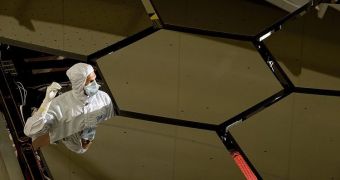Amidst concerns that the NASA James Webb Space Telescope (JWST) might be canceled, a recent report provides another blow for the already-battered project. According to new estimates, the life cycle costs associated with the mission have soared from $6.5 billion to $8.7 billion.
The document comes at the most inappropriate time possible, shortly after the US House proposed the cancellation of the telescope due to the high costs it incurred on NASA and the federal government.
According to Aviation Week & Space Technology, which published the report, these costs pertain to finishing development, launching, and managing the massive space telescope for a 5-year mission.
Given their staunch position against such expenses, the House of Representatives’ Appropriations Committee on Commerce, Justice, and Science is not likely to approve of such a drastic increase. In fact, this may give representatives the excuses the need to persuade others to approve the measure.
In its recommendations for fiscal year 2012, the Committee proposed the cancellation of the project as a whole, despite the progress made, the taxpayer money invested and the necessity to build a successor for the Hubble Space Telescope.
According to the document, the JWST would remain grounded until at least 2018, though it was supposed to launch several years sooner in the original mission time frame. The additional delay is bound to upset politicians even further.
Aviation Week quotes an unmanned NASA spokesman as saying that the details of how the American space agency plans to cover this increase in necessary funds will be included in the FY 2013 proposal.
However, the issue is not likely to go away, since NASA itself is facing a reduction in overall budget levels of up to 10 percent over the next few years. The cut could come as a response to US President Barack Obama's request to cut spending across the board.
NASA Administrator Charles Bolden is now proposing that the extra funds be divided between the Science Mission Directorate and all other Directorates at the agency's Headquarters, in Washington DC. Thus far, only the SMD supported the costs of the JWST.
Bolden also reiterated his support for the telescope, identifying it as a NASA, national and international priority of the highest order. Already, some of the team managing the JWST at the Goddard Space Flight Center has been replaced.
The cost overruns the mission displays are largely associated with managerial errors, and not with technical or scientific difficulties, Universe Today reports.

 14 DAY TRIAL //
14 DAY TRIAL //